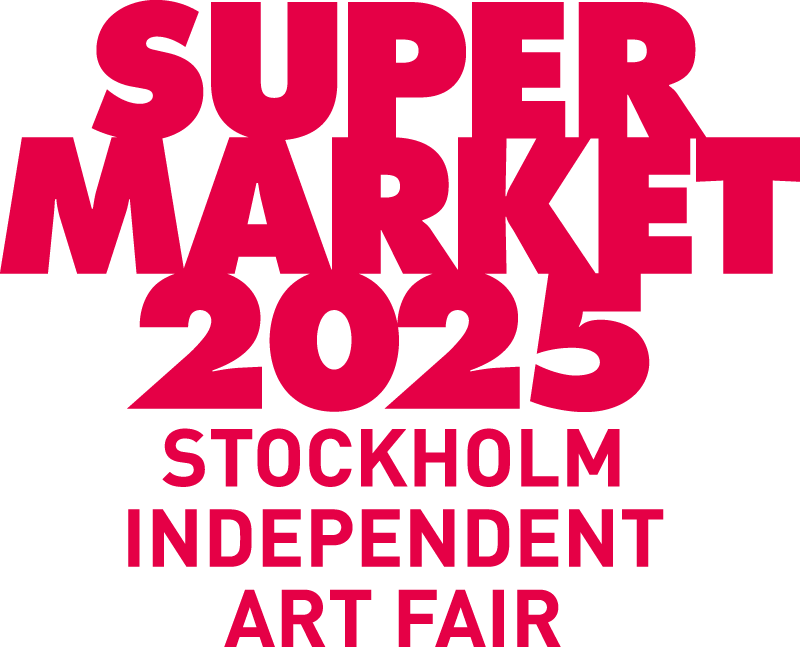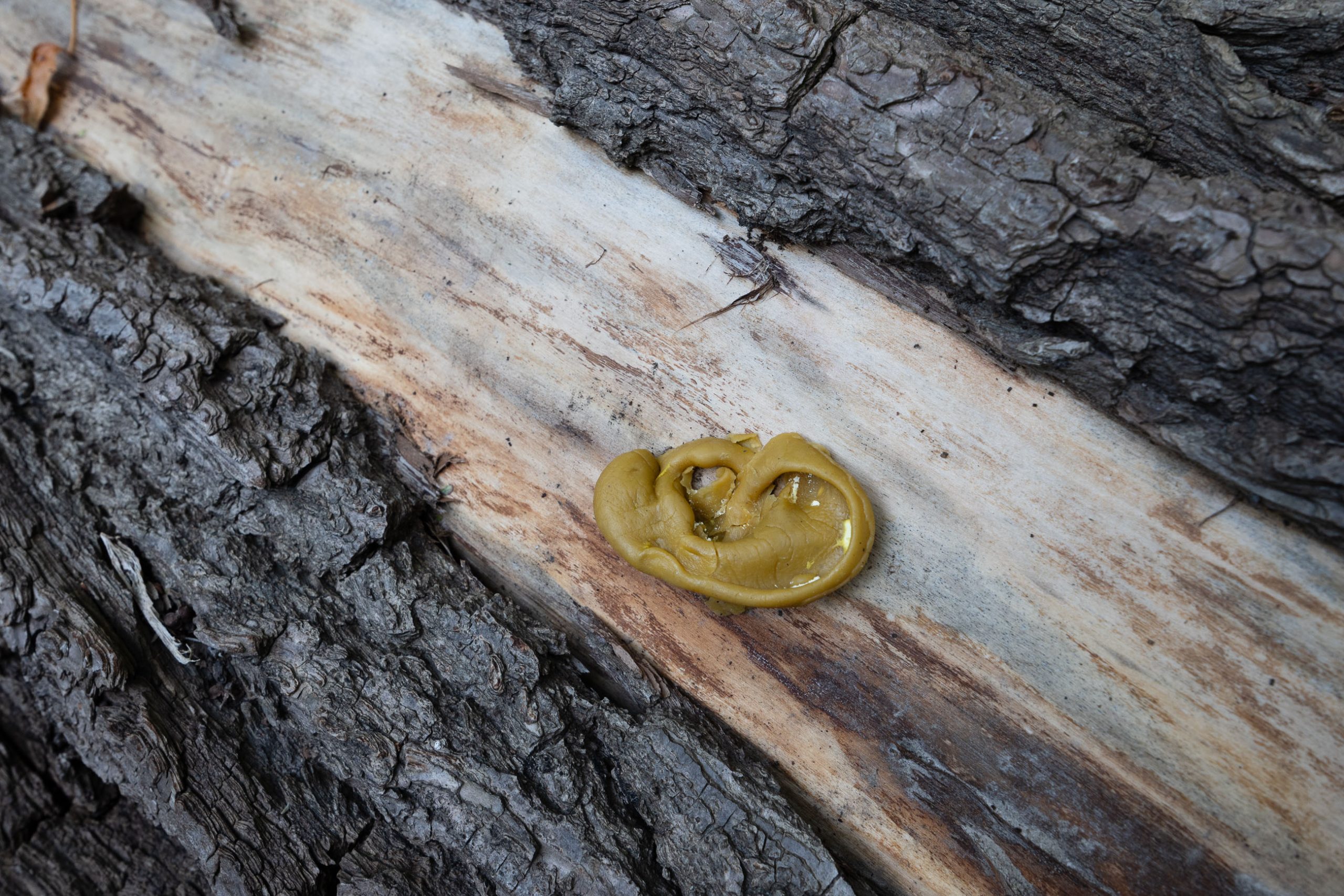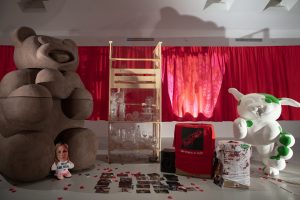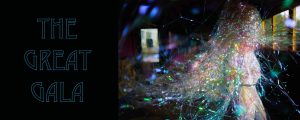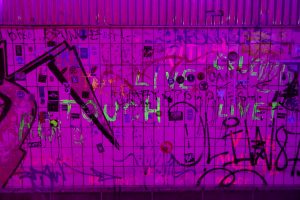– 2024 FRINGE Warszawa organisational team: Katie Zazenski, Wojciech Gilewicz, Lena Pierga, Agnieszka Cieszanowska, Piotr Kopik, Joshua Plough, Marta Matysiak, Joanna Ogińska, Joanna Klass, Kaja Werbanowska, Kinga Cieplińska. Featured in Supermarket Art Magazine 2025
In September 2022, a group of people representing nine artist-run projects and initiatives published a map and called it FRINGE Warszawa. It grew out of a rather strong desire to strengthen the independent, grassroots, project-space contemporary art community in Warsaw and a rather short exchange of conversations and emails which took place during the six(ish) months leading up to that date. What emerged from that moment is now – just more than three years later – a pretty massive movement that is still trying to sort out its shape. But as we do that perhaps what is most important in conceptualising what FRINGE Warszawa is, is that we are committed to increasing accessibility to and visibility of, and to being a support system/resource/opportunity for all who consider them(our)selves FRINGE.
The landscape of the artist-run sector of the contemporary art scene in Warsaw has changed a lot in recent years, perhaps one of the most significant contributing factors being the shift to a right-wing government in 2016. While the effects were not so deeply felt right away, by 2020 some of the most important institutions for art had been taken over by leadership supporting the government. This shift not only destabilised, but completely toppled the patterns and networks of contemporary art production in Poland. Without reliable institutions, the private sector became much more powerful and in many ways, created an unprecedented need for alternatives. Until that time, the artist-run scene in Warsaw was precarious and microscopic, continually in flux with new spaces and projects emerging and then disappearing as is typical of places that are notoriously un- or under-funded.
You could count on half of one hand the number of active spaces at any given moment. But as we fell deeper into this abyss of institutional neutralisation, the increasing dependence on the private sector for visibility, and the market-driven ballooning of emerging artists careers, we started to conversely see the emergence of more grassroots networks and a re-focus on collective work, interest in neutralising hierarchies and the decentralisation of power, and alternative forms of building communities, and the nurturing and promoting of works and ideas that no longer had a space to be seen or heard in this new landscape. All of which also coincided with the global COVID pandemic and the more local battles for human rights and women’s autonomy, forced migrations and disappearances, and the full-scale Russian war in Ukraine.
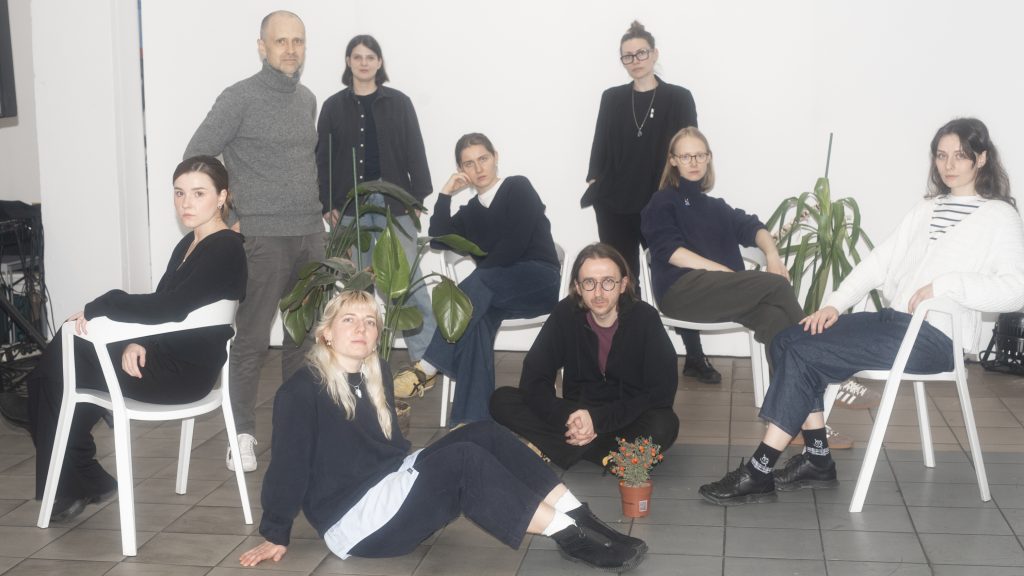
With these local, regional, and global concerns playing out not in the background but very presently and materially, in the late spring of 2022, a small group of individuals active in the off-space/alternative/artist-led space community, in recognition of our need for greater support – technical, financial, emotional, material – decided that at the very least, we would be stronger together. We worked mainly by group emails and decided to share the cost of hiring a graphic designer, to choose a name, and to launch FRINGE Warszawa in the last days of September, at the same time as Warsaw Gallery Weekend – the most powerful annual contemporary art event in Poland., , While we didn’t have a massive amount of visitors or instant visibility, we did have some critical acknowledgement and more importantly, we created an energy. By the next edition in 2023, we had 22 participants who joined us essentially by word-of-mouth, more than half of which are regularly functioning either projects, collectives, or spaces, which more than doubled our presence from the previous year.
In terms of production, we still shared the cost of the designer equally (each year we hire a different graphic designer to develop the visual identity of FRINGE for the upcoming edition; while maybe not the best idea from a marketing perspective in terms of establishing brand identity, we are choosing to prioritise and highlight the shifting nature and continued evolution of FRINGE through our visual identity), but the work of organising and producing FRINGE was quite unevenly distributed – something that we have since gotten much better about but are still in the process of establishing and evolving our methodologies. In addition to this greatly extended community visibility, a significant moment of evolution came through collaboration with a city-funded gallery of historical import, where one of our exhibitions was taking place., Seeing the potential, and the energy that was already behind FRINGE, Galeria Promocyjna invited us to collaborate more directly and offered to support a grant application to the Polish Ministry of Culture to produce the third edition of FRINGE, which, to our complete surprise, was awarded to us in early 2024.
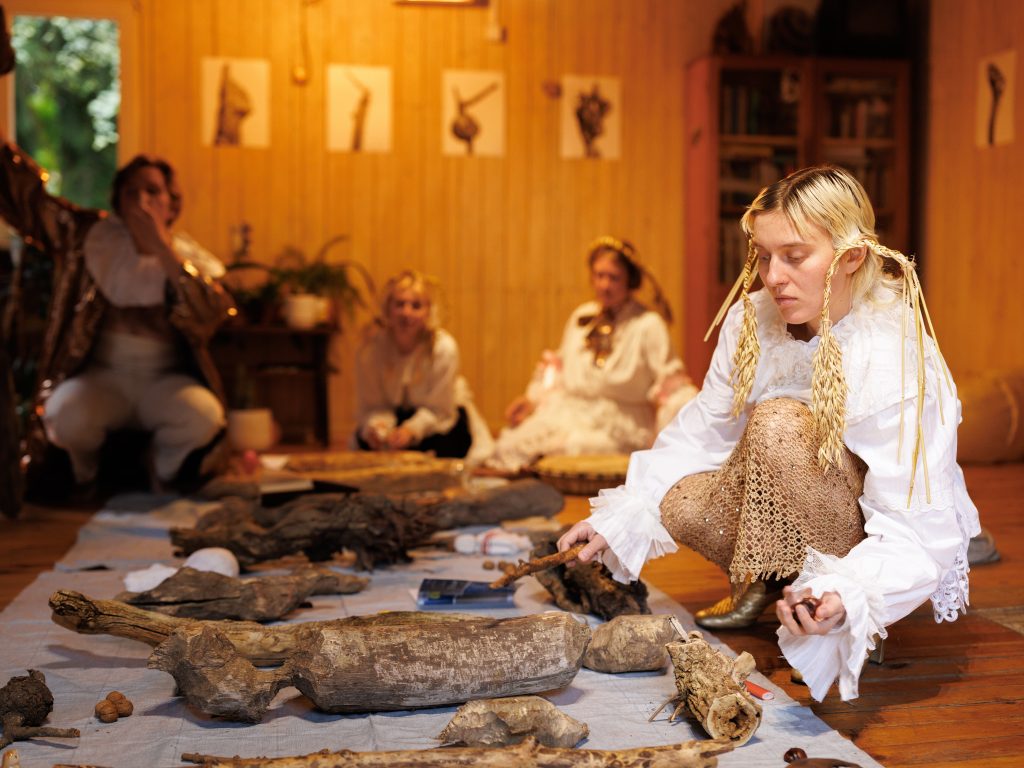
We had many conversations together as an organisational team, how funding could/would change this project, which is something that is also critical to know about FRINGE: we as a team, are in conversation essentially all the time. Between the WhatsApp group chat and the weekly – sometimes twice-weekly – meetings, we are constantly talking about what works, what doesn’t, how to grow FRINGE in a way that is authentic to its roots but also is shifting and reflective of the needs of the contemporary art community today, how to not become too rigid so that we become formulaic and predictable, and how to maintain the vibrancy and transparency (and fallibility!) – the elements that essentially distinguish us from other art events in the city. We also spend a lot of time talking about what it means to be ‘independent’, what it means to be ‘fringe’, and how to negotiate the space of being open to all but having limited temporal and financial resources.
For the third edition we took a dramatically different approach, risky by our own admission but also loaded with potential. We wanted to distribute as much of this grant as possible in our community – to those that are producing exhibitions, running spaces and collectives without support, and in precarious conditions – to really see what would happen when we put out an open call for participation, trusting our community to respect the (very loose and open to interpretation) ethical map (/boundaries) that we established for this edition.
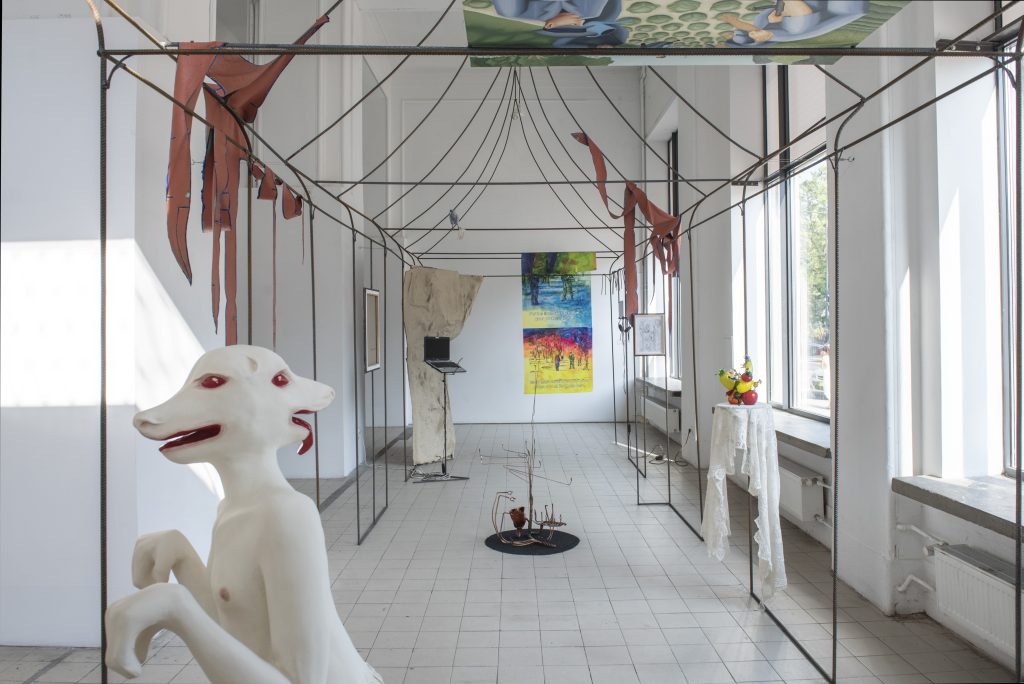
WE / FRINGE:
- Endorse and collaborate with frameworks that are inclusive of diverse audiences.**
- Do not condone physical or psychological violence.**
- Do not accept discrimination or exclusion.**
- Operate on trust, respect, and open communication.
- Are a community, not an art fair or festival.
- Largely represent the independent/off-/project/non-commercial community in Warsaw, whose activities are not primarily financially motivated.
- Are grassroot, fluid, and often transient or even temporary.
We received over 100 applications and ultimately ended up with more than 80 who joined us for our third edition, which ran 26–29 September 2024. This exponential scale shift really cemented us as a platform and affirmed something that we, as organisers and active participants in/contributors to the contemporary art scene in Warsaw, have strongly felt for some time: that the work we do in alternative, grassroots, artist-led communities is a fundamental element of the contemporary art ecosystem, and that we need to champion our own visibility and that any discussion of or engagement with contemporary art should duly acknowledge the role that this sector of the community plays.
But as with everything, clear lines defining what constitutes an ‘independent’ space or project, or what should be included in the canon of contemporary art, is blurry. Many of us engage with contemporary art and culture from multiple lenses: we are at the same time artists, curators, producers, promoters, writers, critics, advocates, educators (or any number of other positions), and therefore run our spaces and projects from these layered perspectives, in all of our copious amounts of spare time. We seriously laboured over this new position of power, and how we could work to balance out this hierarchy and be as inclusive as possible while at the same time producing a major art event for the public that is engaging and that provides something meaningful not only for our participants but also for the broader community. While some aspects were amazing and inspiring, others were decidedly less successful. Our post-FRINGE internal survey yielded a pretty 50/50 split of those who were satisfied and those who took issue with our approach; feedback which we value deeply but also take with a pinch of salt.
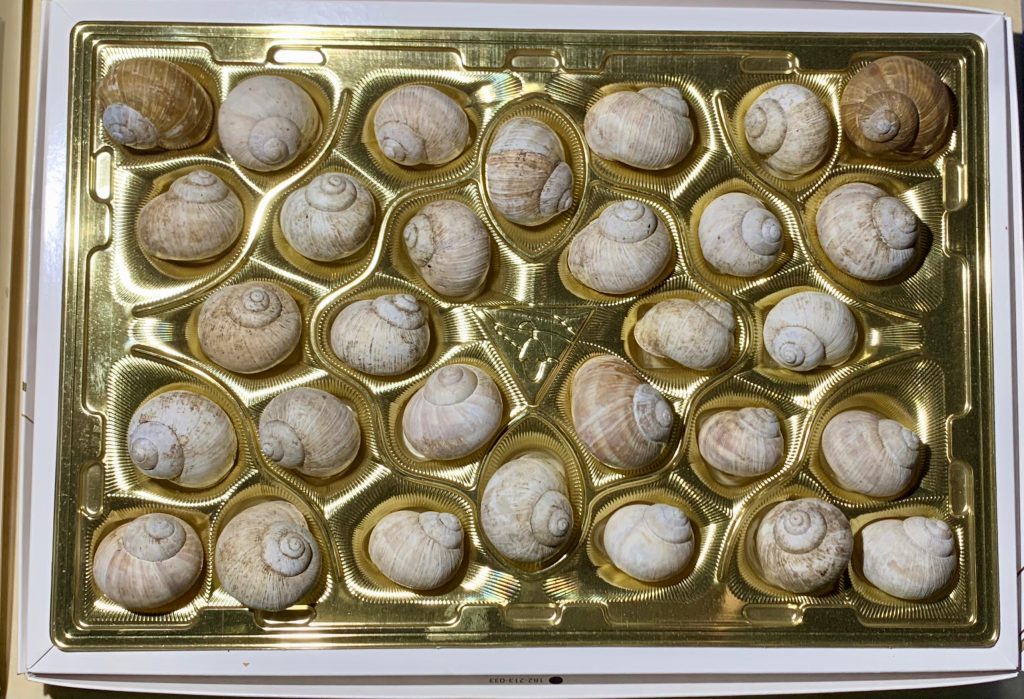
As we wrote in our ethical statement “[w]e are individuals who are doing our best to be fair and transparent within the context of this experiment in community building, and as advocates for independent art and culture production.” FRINGE has allowed us to make a crack in the system. While we have no idea what to predict for the future, there is absolutely no way of undoing what has already been done through FRINGE. As we move forward, we are sorting out ways to disperse this energy from one all-out long weekend in September to a more consistent presence throughout the year. We want to shift the dynamics so that the responsibilities of coordinating and developing ideas don’t become hoarded positions by us, the organisers, but that we integrate into the fold a bit more and open-up the decision making and distribution of labour to the FRINGE community, which we hope will be self-perpetuating. We still believe strongly in being open, transparent, and flexible, but we also recognise that more clearly defining the idea of FRINGE will also help to strengthen and benefit the community of people and projects it is intended to support.
The political pendulum has swung back and with the close of 2024 we have witnessed institutional changes in leadership that we have been waiting for. So as artists and culture workers regain access to our contemporary art institutions, and the landscape of artist-led, grassroots projects, spaces, and collectives in this city ebbs and flows, remaining artist-run and functioning ‘outside’ of convention becomes a conscious choice and a more declarative statement. We take all of this into account, and believe that the most interesting and critical things happening in contemporary art and culture arise from the overlap and intermingling of many voices and perspectives. In three short years FRINGE Warszawa has left an indelible mark on the contemporary art community in Warsaw and all we can hope for is authentic growth and ever-stronger bonds with our friends and colleagues, new and old. We hope that FRINGE can evolve into a more sustainable community – connecting generations, practices, and ideas – be a source of resource distribution, and that it can continue to be responsive and nourishing for as many people as possible.
